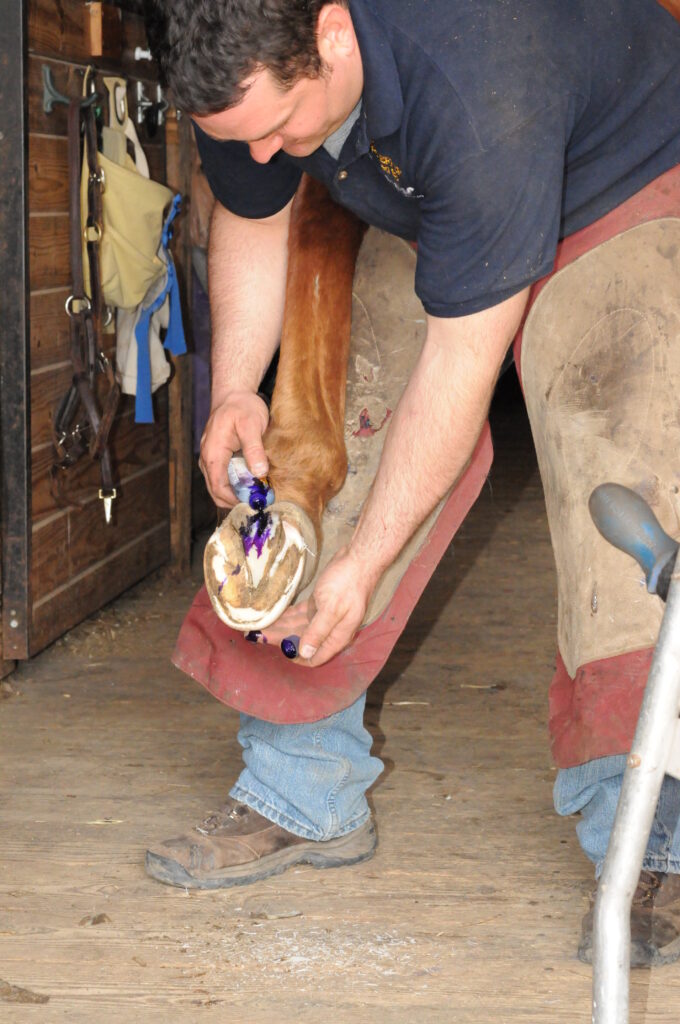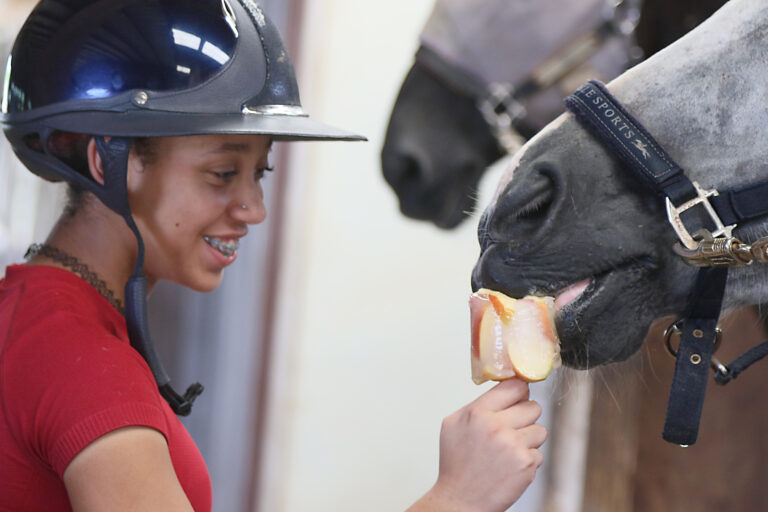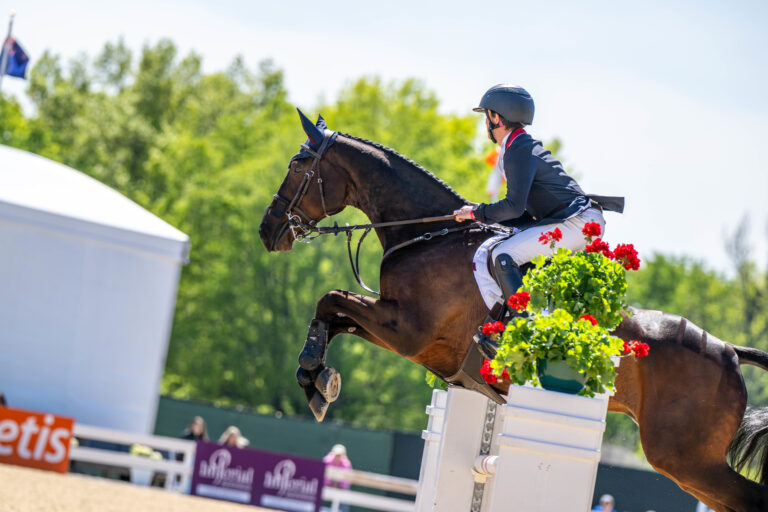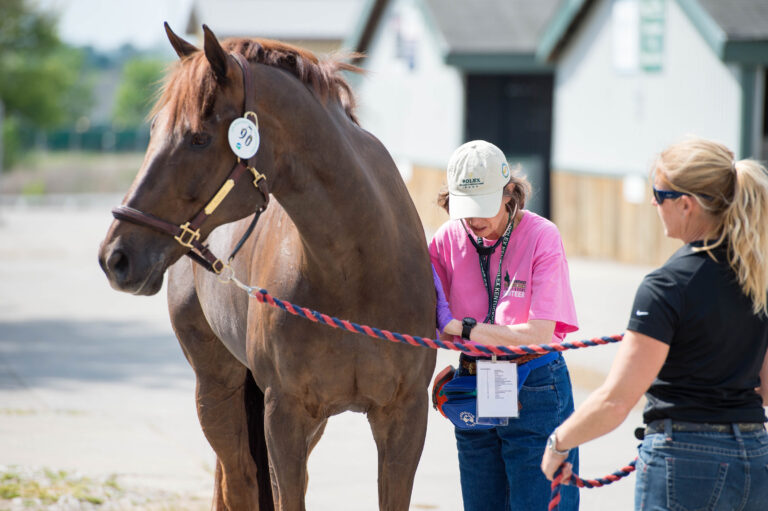
Q: My farrier says that my horse has thrush. How did he develop it and how can I cure him?
STEPHEN O’GRADY, DVM, MRCVS
A: Thrush is a bacterial infection that occurs in the tissue of the frog, the V-shaped structure located between the sole, wall and bars in the heel area of the hoof. The disease begins when bacteria penetrate the outer horn, or epidermis, of the frog. As it progresses, the frog tissue deteriorates, looking uneven and ragged and producing a smelly discharge. In severe cases, the bacteria can reach the inner dermis, the sensitive tissue beneath the frog, causing pain and lameness. You may even notice blood on the end of the hoof pick when cleaning the frog.
Contrary to common wisdom, thrush is not caused directly by unhygienic conditions. It only develops in horses with unhealthy frogs. You can put a horse with healthy frogs in the worst possible conditions—for example, an excessively damp, dirty stall—and he will rarely get thrush. On the other hand, some of the best-cared-for horses do get thrush, despite their immaculate surroundings, because their frogs aren’t healthy. Here’s how it happens:
A healthy, well-formed frog is broad and fleshy. Measured at its base, the widest part, the frog’s width should be at least 70 percent of its length. A healthy frog shares the load-bearing function with the other structures of the hoof and helps to absorb concussion. This, in turn, stimulates continued frog health. A well-shaped frog also has a natural self-cleaning mechanism. When it comes into contact with the ground, it expands, pushing accumulated dirt and debris out of the frog sulci, the grooves on either side of the frog.
An unhealthy frog is recessed—shrunken inward from the surface level of the rest of the hoof—and is smaller in size than it should be. This can occur for a variety of reasons, including genetic abnormalities such as a clubfoot, and farriery issues such as a horse with sheared or low heels. The fundamental problem usually involves the frog and heels of the hoof capsule not being on or close to the same plane. This limits the frog’s contact with the ground and thus reduces the stimulation from the ground, causing the frog to atrophy. The recessed frog does not share in supporting the horse’s weight, so it shifts too much of the load bearing back onto the heels of the hoof capsule.
Meanwhile, as the frog atrophies, the sulci between it and the rest of the hoof structures deepen. Dirt and debris accumulate in these grooves, creating the anaerobic conditions in which bacteria thrive. Weakened by its reduced protective outer horn, the frog tissue becomes more susceptible to penetration by the bacteria and, consequently, development of the disease.
The best way to cure thrush and prevent it from recurring is to solve your horse’s original hoof-capsule abnormality. Your farrier will need to trim his hooves in a way that puts the frog and heels of the hoof capsule back on the same plane. Depending on your horse’s conformation and trimming history, this may just be a matter of rasping down his heels. Once the frog is level with the rest of the foot again, its restored function will promote new, healthy growth.
Initially, your farrier will also treat the thrush much like a dirty wound, trimming away the loose, diseased frog tissue and possibly applying dilute bleach. You can follow this up with applications of a mild astringent, such as Betadine®, or another anti-thrush product. (Note: Never use an iodine solution stronger than 2 percent as this is extremely caustic.) Severe cases will improve faster if you switch from straw bedding, which holds more moisture against the horse’s hooves, to shavings or sawdust. All of these treatments are secondary, though, and will only be effective if the hoof is also trimmed appropriately. Once the frog is back on the same plane with the rest of the hoof, it will become healthy and should heal quickly.
Stephen O’Grady, DVM, MRCVS, began his career as a farrier after a formal apprenticeship with International Horseshoeing Hall of Fame farrier Joseph Pierce. He shod horses professionally for a decade before earning his veterinary degree from the University of Pretoria in South Africa and completing an equine internship in Cape Town. For the next 10 years, he worked with Dan Flynn, VMD, at Georgetown Equine Hospital in Charlottesville, Virginia. In 2003, Dr. O’Grady started his practice devoted to foot disease and equine therapeutic farriery, Virginia Therapeutic Farriery, in Marshall, Virginia. He was inducted into the International Equine Veterinarian Hall of Fame that year. A prolific author and editor of equine podiatry literature, he received the American Association of Equine Practitioners President’s Award for his work in farrier education in 2009
This article originally appeared in the May 2015 issue of Practical Horseman.











